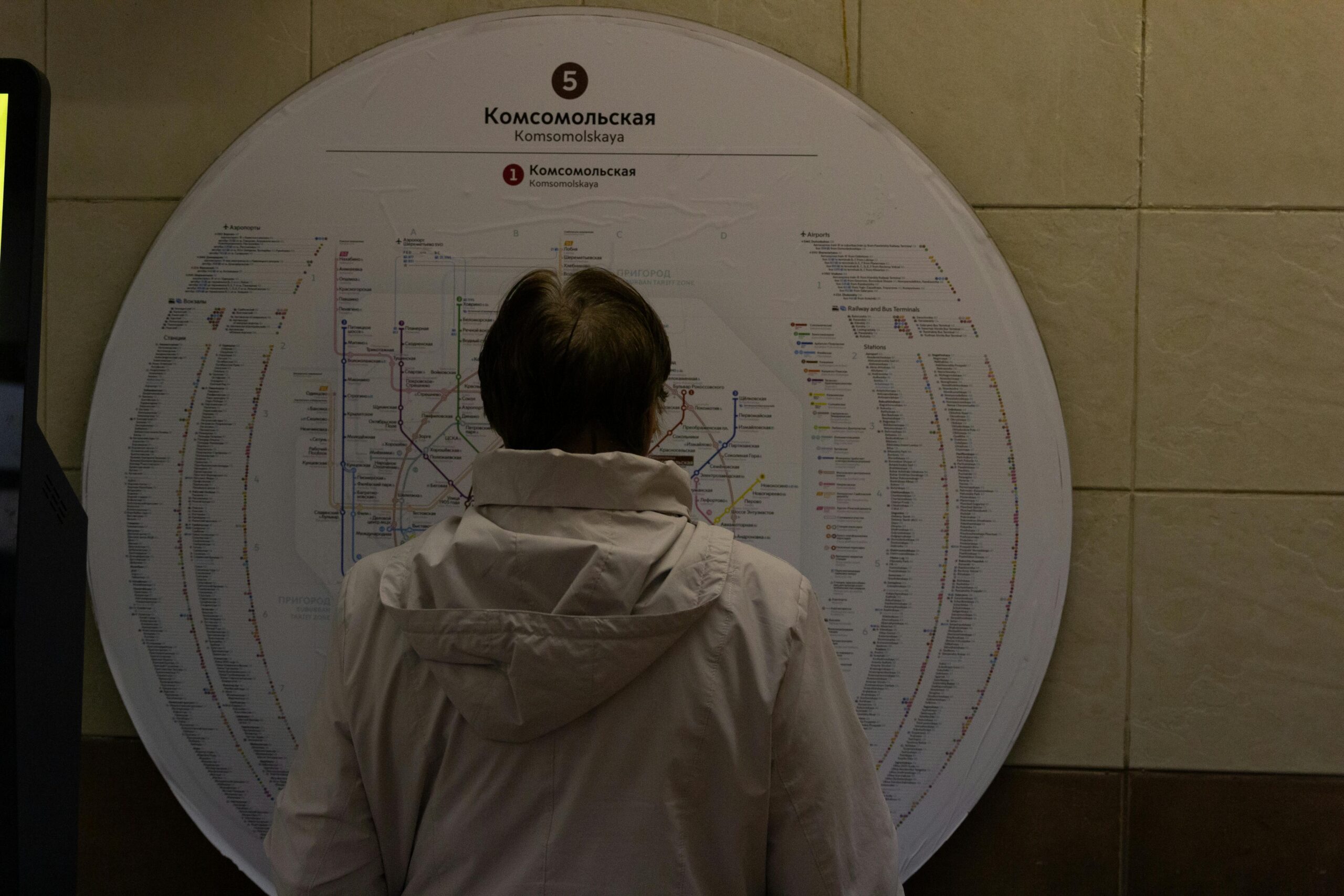Navigating the bustling city of Perth can sometimes feel overwhelming, especially when you’re trying to uncover those secret pathways and lesser-known travel hacks. This Train Stations Perth Map guide is here to change that! Whether you’re a daily commuter, a curious explorer, or a tourist eager to discover hidden routes, we delve deep into the intricate web of Perth’s train stations to help you travel smarter and faster. Have you ever wondered if there’s a shortcut or an alternative station that could save you time? Keep reading to unlock the secrets behind Perth’s rail network and get the most out of your journey.
Understanding the layout of the train stations in Perth is crucial for anyone who wants to maximise their travel experience. From the major hubs like Perth Station and Elizabeth Quay to the quaint stops nestled in suburban corners, our comprehensive Perth train stations map reveals the routes less travelled. But it’s not just about knowing where to get on or off — it’s about discovering those hidden connections and clever travel tips that locals swear by. Imagine skipping long queues, avoiding peak hour chaos, or finding a scenic route that turns your daily commute into a mini adventure. Sounds intriguing, doesn’t it?
In this article, we’ll explore the best ways to use the Perth train stations map effectively, share insider tips on navigating the network, and highlight some trending topics like sustainable travel and smart ticketing options. Plus, we’ll answer common questions such as “Which Perth train station is the most convenient?” and “How can I find alternative routes using the map?” By the end, you’ll not only feel confident with Perth’s train system but also inspired to explore new paths and make your travel experience truly unforgettable. Ready to uncover the hidden gems of Perth’s rail network? Let’s dive in!
Top 7 Lesser-Known Train Stations in Perth: Unlock Hidden Routes on Your Map
Exploring Perth’s train network often means focusing on well-known hubs like Perth Station or Fremantle, but what about those small, overlooked stops that hold secrets of their own? If you ever thought a train stations Perth map was just about the main lines and stations, think again. Plenty of hidden routes and lesser-known stations pepper the city’s rail system, offering unique glimpses into Perth’s history and new ways to travel around the city. Here’s a rundown of the top 7 lesser-known train stations in Perth that you might want to unlock on your next journey.
Why Look Beyond The Main Stations?
Most tourists and even locals tend to stick to the major stations. But by doing so, they miss out on some charming, quiet places that often have interesting stories and useful travel options. These smaller stations can often be less crowded, making your commute or trip more relaxing. Plus, some are gateways to hidden neighbourhoods and attractions not easily reached otherwise.
Top 7 Lesser-Known Train Stations in Perth
Below is a list of stations which aren’t usually the spotlight but deserve attention for their unique offerings or strategic locations.
Cloverdale Station
- Located on the Midland Line, Cloverdale is a small stop mostly used by locals.
- It was opened in 2003 to serve the growing residential areas nearby.
- The station is unstaffed but has basic facilities like shelters and bike racks.
- Great for visitors who wants to explore the eastern suburbs quietly.
Bull Creek Station
- Found on the Mandurah Line, Bull Creek is often overshadowed by nearby stations like Canning Bridge.
- It serves a busy commercial district, including office parks and shopping centres.
- The station has a park-and-ride facility, useful for commuters driving in from outer suburbs.
Beckenham Station
- Sitting on the Armadale Line, Beckenham station has a quaint, local vibe.
- The station is close to several parks and community centres, making it a hub for neighbourhood activities.
- It’s a good starting point for exploring the southern suburbs away from the city bustle.
Kensington Station
- Kensington is also on the Armadale Line and is known for its proximity to the Perth Zoo and some lovely riverside parks.
- The station itself doesn’t have heavy foot traffic but is key for visitors looking to avoid the more crowded city stops.
- The architecture is modest but functional.
Success Hill Station
- This station lies on the Midland Line and is named after a nearby golf club.
- It’s quite a quiet stop but perfect if you want to explore the northern residential areas or take a scenic walk around the nearby parks.
- Facilities include basic seating and shelter but no ticket office.
Victoria Park Station
- While somewhat known, Victoria Park is lesser used compared to Perth or Burswood stations despite being a central junction.
- It connects several bus routes, making it a handy transfer point for getting around Perth’s eastern suburbs.
- Offers a good mix of commercial and residential access.
Loch Street Station
- Located on the Fremantle Line, Loch Street is a quiet, unstaffed station popular for those visiting the nearby beach suburbs.
- It’s particularly useful during weekends for beachgoers wanting a less crowded alternative to Fremantle station.
- The station is quite basic, with just a platform and shelter.
Historical Context Behind These Stations
Many of these smaller stations were either added as the suburbs expanded or replaced older stops that no longer served the community effectively. For example, Cloverdale station was part of a push in the early 2000s to improve public transport access to Perth’s outer suburbs. Similarly, Bull Creek was developed to cater to a growing business district, showing how the train network evolved with the city’s changing landscape.
Practical Travel Tips Using Lesser-Known Stations
If you planning to explore these hidden routes, here are some handy tips:
- Check the Train Timetables: Smaller stations often have less frequent services, especially during off-peak hours. Planning ahead is key.
- Use the SmartRider Card: This will save time and money, as you can easily tap on and off at any station, including the lesser-known ones.
- Park-and-Ride Options: Stations like Bull Creek offer parking facilities, so if you driving in from outer areas, these can be very convenient.
- Combine with Bus Routes: Stations such as Victoria Park serve as interchange hubs, so check the local bus connections to maximise your travel options.
- Prepare for Minimal Facilities: Most smaller stations don’t have ticket offices or staff,
How to Navigate Perth Train Stations Like a Pro: Essential Travel Tips for Commuters
Navigating the train stations in Perth can be a bit confusing if you are new to the city or just visiting. With a network that’s grown over the years, Perth’s train stations offer a variety of routes and connections that can sometimes be tricky to figure out. This article will help you discover some hidden routes, practical travel tips, and an overview of the train stations Perth map, so you can commute like a proper local without getting lost or frustrated.
Understanding Perth’s Train Stations: A Brief Overview
Perth’s rail system is not just a simple point-to-point network; it’s a web of interconnected lines served by multiple stations, each with its own history and unique features. The train system was first established in the late 19th century, evolving from steam trains to modern electric trains, making travel faster and more efficient. The primary lines include the Joondalup, Mandurah, Armadale, Fremantle, Midland, and Airport lines.
Each line serves different suburbs around Perth, and many stations function as hubs where commuters can swap lines or catch buses. For example, Perth Station, the central hub, links almost all lines, making it an essential stop for travellers. The station itself is one of the busiest in Western Australia, undergoing several upgrades recently to better handle the increasing passenger numbers.
Train Stations Perth Map: Key Stations and Routes
If you’re looking at a train stations Perth map, it might look overwhelming at first. But breaking it down into main routes and stations will help you get a clearer picture.
Main train lines and their key stations:
- Joondalup Line: Runs from Perth to Butler, passing through stations like Leederville, Stirling, and Whitfords.
- Mandurah Line: Connects Perth with Mandurah, stopping at places like Canning Bridge, Cockburn Central, and Rockingham.
- Fremantle Line: Shorter but popular, runs from Perth to Fremantle with stops such as Subiaco and Cottesloe.
- Armadale Line: Goes from Perth to Armadale, with stations including Victoria Park and Kelmscott.
- Midland Line: Runs east from Perth to Midland, including stations like Maylands and Bassendean.
- Airport Line: Newer addition, links Perth to the airport and beyond to High Wycombe.
Knowing this basic layout helps you plan trips without relying too much on apps or asking strangers. Most stations have clear signage, but sometimes it’s easier to check your route ahead and be prepared.
Hidden Routes and Travel Tips for Perth Commuters
Some routes in Perth’s rail network are less obvious but can save you time or help avoid busy periods. For instance, taking the Armadale line to Victoria Park and then switching to a bus can be faster than going all the way to Perth Station during peak hours.
Here’s some travel tips that often get overlooked:
- Off-peak travel is cheaper and quieter: If you can travel outside 7–9 AM or 4–6 PM, your journey will be less stressful and usually less expensive.
- Use smartcards: The SmartRider card offers discounted fares compared to cash tickets and is accepted on trains, buses, and ferries.
- Check for station facilities: Some stations have bike racks, parking, or even coffee shops, which might be handy if you commute daily.
- Plan for disruptions: Construction or maintenance can affect schedules; follow local transport websites or social media for updates.
- Hidden pedestrian shortcuts: Some stations, like Perth or Subiaco, have walking tunnels or footbridges that can shorten your walking time between platforms or nearby bus stops.
Comparing Perth Train Stations: What to Expect
Not all train stations in Perth are created equal. Some are large, modern, and fully accessible, while others might be smaller and a bit outdated.
Here’s a quick comparison table:
| Station Name | Facilities | Accessibility | Nearby Attractions |
|---|---|---|---|
| Perth Station | Multiple platforms, shops | Fully accessible | Perth CBD, shopping centres |
| Fremantle Station | Cafe, seating areas | Partially accessible | Fremantle Markets, beaches |
| Joondalup Station | Park and ride, toilets | Fully accessible | Joondalup Shopping City |
| Victoria Park Station | Basic shelters, bike racks | Limited accessibility | Victoria Park cafes |
| Midland Station | Parking, toilets | Fully accessible | Midland Gate shopping |
Knowing what facilities a station offers can affect your commute experience, especially if you have luggage or require assistance.
Practical Examples: Navigating Perth’s Train Network
Imagine you’re staying near Subiaco and want to get to the airport. You might think the quickest way is to head to Perth Station and then catch the Airport line. But actually, taking a train from Subiaco to
Discover Perth’s Secret Train Stations with Our Detailed Interactive Map Guide
Discover Perth’s Secret Train Stations with Our Detailed Interactive Map Guide
If you think you know all about Perth’s train system, think again! There are hidden gems and lesser-known stations scattered across the city and its outskirts that many travellers and locals often overlook. Our train stations Perth map is designed to help you uncover these secret routes and stations, offering a fresh perspective on your commuting and exploring activities. Whether you are a daily commuter or just someone curious about Perth’s rail history, this guide will give you new insights and practical tips on navigating the city’s rail network.
Why Explore Perth’s Hidden Train Stations?
Perth’s train network, managed by Transperth, covers a vast area around the metropolitan region. While major hubs like Perth Station and Fremantle Station are well known, there are smaller stations that have interesting stories and sometimes unique architectural features. Some stations were built decades ago but now see fewer passengers, making them quiet spots that are perfect for those wanting to avoid the busy city buzz.
Many of these stations are not featured prominently on standard maps or travel guides, so they remain a bit of a mystery. Discovering them through our interactive Perth train stations map not only helps with planning trips more efficiently but also enriches your understanding of the city’s development and transport evolution.
Historical Context of Perth’s Railway System
The railway system in Perth began in the late 19th century, with the first line opening in 1881. This was primarily to connect Perth with other parts of Western Australia, boosting trade and mobility. Over the decades, the system expanded, new lines were added, and many stations were built to serve growing suburbs.
Some stations that are now considered “hidden” were once bustling hubs in their heyday. For example, the old Midland station area played a key role in freight and passenger services before the network modernised. Understanding this historical background makes the discovery of hidden stations more meaningful — it’s like stepping back in time while travelling today.
How to Use the Train Stations Perth Map
Our interactive map is designed to be user-friendly and informative. Here’s how you can make the most of it:
- Identify lesser-known stations: The map highlights not just main stops but also smaller, quieter stations.
- Plan alternative routes: If you want to avoid crowded trains or explore different areas, the map suggests hidden routes.
- Get travel tips: Some stations have limited facilities or specific peak times when they are busiest; this info helps you avoid inconvenience.
- Historical markers: Stations with historical significance or unique architecture are flagged for enthusiasts.
Top Hidden Train Stations in Perth
Here’s a list of some secret or underappreciated stations you might want to check out:
| Station Name | Line | Notes |
|---|---|---|
| Bull Creek | Mandurah Line | Quiet suburb station, good for scenic walks nearby |
| Lynwood | Thornlie Line | Less busy, with easy bus connections |
| Canning Bridge | Mandurah Line | Near shopping centres but often overlooked |
| Kwinana | Mandurah Line | Industrial area station, interesting for urban explorers |
| Armadale | Armadale Line | Historical significance, gateway to regional WA |
Practical Travel Tips for Using Hidden Stations
- Check the train schedules carefully; some hidden stations might have less frequent service especially on weekends.
- Bring a printed or offline version of the Perth train stations map, because mobile reception can be patchy in some areas.
- Combine your train trip with local bus services; many of the smaller stations are well connected by buses, but these connections might not appear on all apps.
- If you are a tourist, ask locals about these secret stations — sometimes their personal stories add value that no map can provide.
- Be mindful of safety, especially when using stations late at night or in less populated areas.
Comparison: Major vs Hidden Perth Train Stations
| Feature | Major Stations | Hidden Stations |
|---|---|---|
| Passenger Volume | High | Low to moderate |
| Facilities | Full (shops, toilets) | Basic or limited |
| Accessibility | High (wheelchair, multiple entrances) | Varies, some less accessible |
| Crowds | Often crowded | Usually quiet |
| Nearby Attractions | City centres, landmarks | Parks, residential areas, industrial zones |
Why This Matters for New Yorkers
You might wonder why a New York-based news site is featuring Perth’s train stations map. Well, transport systems worldwide share many similarities and unique challenges. Exploring Perth’s hidden stations offers a fresh view on how cities can manage growth, maintain historical sites, and provide efficient travel options without overwhelming the main hubs. Plus, if you’re planning travels to Australia or just love urban exploration stories, this is a perfect example of how a little curiosity and the right map can open up new adventures.
Discovering these secret train stations in Perth not
Why Using a Train Stations Perth Map Can Transform Your Daily Commute
Why Using a Train Stations Perth Map Can Transform Your Daily Commute
Navigating through a bustling city like Perth can be overwhelming, especially for those relying on public transportation each day. Many commuters often find themselves stuck in traffic jams, wasting valuable time, or missing connections on their routes. But what if there was a simple tool that could make your travel easier, quicker, and maybe even enjoyable? Enter the train stations Perth map — a resource that many overlook but can massively improve your daily commute. This article explores why using a map of Perth’s train stations can change your travel experience, uncover hidden routes, and provide essential travel tips.
Understanding the Train Stations Perth Map
A train stations Perth map is more than just a visual guide; it’s an essential navigation aid that displays all the train lines, stations, and connections across the metropolitan area. Perth’s train network is operated mainly by Transperth and covers several lines such as the Joondalup, Mandurah, Armadale, Fremantle, and Midland lines. Each line connects a series of stations from the city centre to the suburbs, facilitating thousands of journeys daily.
Historically, Perth’s train network began in the late 19th century, primarily serving freight and limited passenger services. Over time, as the city expanded, the network evolved to accommodate commuter needs. Modern maps now showcase a comprehensive layout with interchange stations, park-and-ride facilities, and nearby bus connections.
Why the Map Is A Game-Changer for Commuters
Many people commute without knowing the full extent of train options available. They just catch the first train or bus that appears, but this often means longer travel times or crowded carriages. Using a Perth train stations map helps you:
- Identify the quickest routes between your home and workplace
- Discover alternative paths during service disruptions or delays
- Spot lesser-known stations that might be closer to your destination
- Plan trips with minimum transfers or walking distances
- Save money by choosing routes with cheaper fares or zones
For example, a commuter travelling from Subiaco to Perth might not realise that catching a train from West Leederville station takes less time than the more popular Subiaco stop. Without a map, this option could remain hidden.
Discover Hidden Routes and Travel Tips
Sometimes, hidden routes or less obvious train lines can save heaps of time. The Perth train stations map reveals connections that are not immediately obvious from just looking at timetables or asking around.
Hidden route examples:
- Claremont to Fremantle via the Fremantle line: Instead of going through Perth city centre, some travellers can use this route to avoid central station crowds.
- Midland line to Armadale line interchange at Claisebrook station: This connection can be used to reach places on the Armadale line without backtracking through the city.
- Joondalup to Mandurah line via Perth station: Planning transfers carefully can reduce waiting times and make commutes smoother.
Travel Tips for Using the Map:
- Always check for planned maintenance or disruptions, which are often marked on official maps.
- Use the map to identify park-and-ride facilities if you prefer driving to a station before taking the train.
- Look for stations with bicycle racks to combine cycling and train travel.
- Recognise zones on the map to calculate ticket prices and avoid overspending.
- Download a digital version of the map for easy access on your smartphone.
Comparing Train Stations Perth Map with Other Navigation Tools
While smartphone apps and GPS have made navigation easier, sometimes they lack the full perspective that a detailed map offers. Here is a quick comparison:
| Feature | Train Stations Perth Map | GPS / Navigation Apps | Timetables Only |
|---|---|---|---|
| Visual overview of network | ✔ | Limited or zoomed-in | No |
| Hidden routes discovery | ✔ | Depends on app accuracy | No |
| Offline access | ✔ (if printed or saved) | Often requires internet | ✔ |
| Ticket zone information | ✔ | Rarely included | No |
| Interchange station help | ✔ | Varies | No |
Using a dedicated train stations Perth map complements other travel tools. It gives a clearer picture of the network, helping commuters plan smarter.
Practical Example: Planning a Commute Using the Map
Imagine Sarah, who recently moved to the suburb of Cannington and works in the Perth CBD. Initially, she took a bus that was slow and unreliable. After consulting the train stations Perth map, she realised the nearest station was actually Welshpool, which connects directly to Perth via the Armadale line.
Her new commute plan:
- Cycle 5 minutes to Welshpool station.
- Take the train on Armadale line to Perth station (about 20 minutes
The Ultimate Guide to Perth Train Stations: Exploring Hidden Routes and Travel Hacks
Navigating Perth’s train network can be a bit of a puzzle for visitors and even locals sometimes. With a sprawling system that serves the city and surrounding suburbs, knowing your way around the train stations Perth map is essential if you want to uncover hidden routes and save yourself some travel time and money. This guide aims to shed light on those less obvious travel hacks, secret connections, and useful tips that you won’t find easily in tourist brochures or official websites.
Understanding the Perth Train Network: A Brief Overview
Perth’s rail network is operated by Transperth, and it comprises five main lines: the Joondalup, Mandurah, Midland, Armadale, and Fremantle lines. Each line serves a variety of stations, from the busy central hubs to quieter suburban stops. The network is designed to connect the city centre with outer suburbs and regional areas, but many travellers overlook some lesser-known routes that can make a big difference in your daily commute or sightseeing plans.
Historically, the Perth train system has evolved since the late 19th century, initially focusing on freight and regional services before shifting towards metropolitan passenger travel. Some stations on the map, like Fremantle, have rich histories, dating back to the 1880s and still maintain vintage charm alongside modern facilities.
Key Train Stations in Perth You Should Know
Below is a summary of some notable stations, including those often ignored but worth exploring:
| Station Name | Line | Key Features | Travel Tips |
|---|---|---|---|
| Perth Station | All lines | Central hub, retail outlets | Buy a SmartRider card here for discounts |
| Elizabeth Quay | Mandurah/Arm | Waterfront access, ferry links | Great for river cruises and dining spots |
| Subiaco | Fremantle | Near Subiaco Oval stadium | Visit on event days for vibrant atmosphere |
| Claisebrook | Midland | Heritage-listed, art displays | Quiet stop, good for pedestrians |
| McIver | Midland | Connecting bus routes | Use to avoid peak hour congestion |
| Cockburn Central | Mandurah | Park and ride facilities | Ideal for commuters from south suburbs |
| Loch Street | Fremantle | Close to university precinct | Less crowded, good for students |
Discover Hidden Routes on Your Perth Train Stations Map
If you think all routes in Perth are straightforward, think again. Some travellers don’t know that switching lines at certain stations can cut down travel time significantly. For example, instead of transferring at Perth Station, you can sometimes switch lines at Claisebrook or McIver, which are less busy and often quicker during rush hours.
Also, the Mandurah and Joondalup lines run parallel for a stretch but have different stopping patterns. If you’re heading north or south, knowing which line skips certain stations can save you a few minutes.
Here’s a quick list of travel hacks for hidden routes:
- Use Claisebrook to transfer between Midland and Armadale lines during peak times.
- Take the Fremantle line early morning or late evening for fewer crowds.
- Park your car at Cockburn Central for cheaper parking and avoid the city’s parking fees.
- Check out the timetable for express services on the Joondalup line, which skip multiple stops.
Practical Travel Tips for Using Perth Train Stations
Getting around Perth by train can be easier if you keep in mind some practical advice. Whether you’re a tourist or a local, these tips can improve your journey:
- SmartRider Card: Buying and topping up a SmartRider card gives you discounted fares compared to buying single tickets.
- Off-Peak Travel: Trains are less crowded and cheaper during off-peak times, generally before 7 am and after 9 am on weekdays.
- Station Amenities: Not all stations have toilets or shops. Plan accordingly if your journey involves smaller stops like Claisebrook or McIver.
- Real-Time Apps: Use the Transperth app or Google Maps with Perth train stations map layers to get live updates on train arrivals and delays.
- Accessibility: Most major stations have lifts and ramps, but some smaller stops might not be fully accessible for people with mobility challenges.
Comparing Perth’s Train Stations to Other Australian Cities
Perth’s train system is unique in some ways compared to Sydney or Melbourne:
- Size: Perth’s network is smaller, making it easier to navigate but sometimes less frequent.
- Modernity: Many of Perth’s stations have been recently upgraded with modern facilities, unlike some older stations in Melbourne.
- Crowd Levels: Perth trains are generally less crowded, offering a more relaxed travel experience.
- Connectivity: Unlike Sydney’s extensive suburban rail, Perth relies heavily on bus-train integration, so knowing interchange stations is key.
Example Travel Itinerary Using Hidden Routes
Conclusion
In conclusion, the train stations Perth map serves as an invaluable tool for both daily commuters and tourists navigating the city’s extensive rail network. By highlighting key stations, transfer points, and nearby amenities, the map simplifies travel planning and enhances overall convenience. Whether you’re aiming to explore Perth’s vibrant suburbs or commute efficiently to work, understanding the layout of the train stations ensures a smoother, more enjoyable journey. Moreover, with ongoing developments and upgrades to the network, staying informed through updated maps can help you make the most of available routes and services. For those keen on sustainable and cost-effective travel, familiarising yourself with the Perth train stations map is a smart move. We encourage you to download the latest version or access interactive online maps to plan your next adventure with confidence and ease. Embrace public transport and discover all that Perth has to offer, one station at a time.













